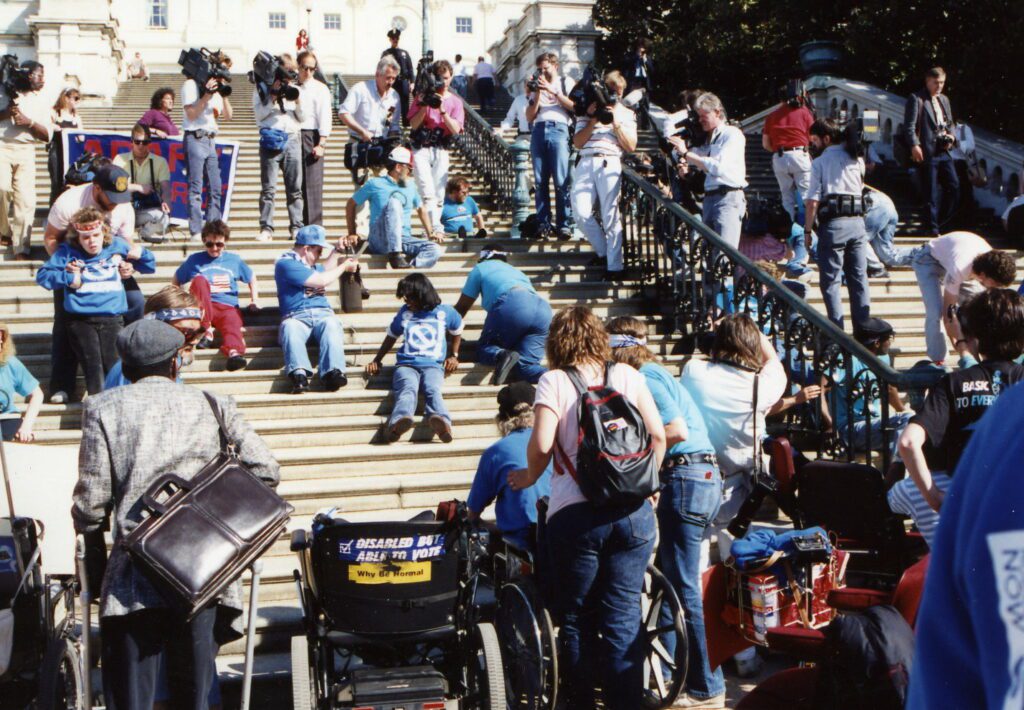Before the American Disabilities Act was passed. People with disabilities needed to leave their wheelchairs if they wanted to use public transport. Several establishments could also choose to refuse service to people who are incapacitated as well.
Several activists abandoned their wheelchairs during a protest. They proceeded to crawl up the US Capitol’s 83 steps to prove a point how people with disabilities struggle daily. They needed the American Disabilities Act.
How Did the Americans with Disability Act Change Everyone’s Lives?
To know why the Americans with Disability Act was necessary, let talk about how life was before the Act was passed.
Before the Act was signed, people who had disabilities truly struggled with life. Those that needed wheelchairs had to leave them behind if they wished to ride a bus or train. Restaurants and even grocery stores had the option to refuse service to anyone with evident disabilities. People in wheelchairs cannot physically enter a library and would not be able to borrow books.
Homosexuality was even considered to be a disability and a disease back then. Employers had the choice to pay disabled people less because their disability would seem as if they did not do the same amount of work as a non-disabled person. Restrooms are not all wheelchair-accessible; some would need to wear diapers when they traveled.
With the implementation of the act, several lives truly change. (Source: National Museum of American History)
What Happened During the Protest?
The Americans with Disabilities Act was stalled in Congress. The people responded by holding a protest that started in the White House and ended in the US Capitol. Thousands of people, including some who are physically disabled, joined the cause.
As soon as they got to the steps of the building, 60 protestors abandoned their mobility aids and proceeded to crawl up the steps. This was a physical demonstration of how the lack of accessibility truly affected disabled people. Furthermore, this showed congress how urgent it was to pass the ADA.
After the Capitol Crawl, George H. W. Bush signed the law on July 26, 1990. (Source: Zinn Education Project)
Who is Jennifer Keelan-Chaffins?
Jennifer Keelan-Chaffins was the youngest person to climb the steps during the protest. She had already started protesting two years before the famous Capitol Crawl.
For me at age six, this was the first time that I ever had seen people with disabilities like myself fighting for their rights. I realized these people with disabilities are fighting for their right to be acknowledged and accepted and I can too, and I want to be a part of that.
Jennifer Keelan-Chaffins
When Keelan-Chaffins came to the protest, several organizers were uncertain if it was a good idea for her to join in, especially climbing the steps.
They were concerned about what that could do, the image of me climbing the steps, and whether or not it would send a message of pity instead of empowerment. Even though I was quite young, I realized that as one of the very few kids that got to be involved in this movement it wasn’t just about myself but it was about them as well.
Jennifer Keelan-Chaffins
Watch Jennifer Keelan-Chaffins’ interview here.
(Source: National Museum of American History)
